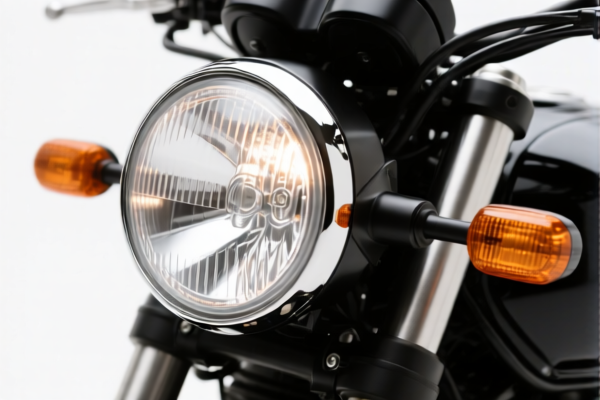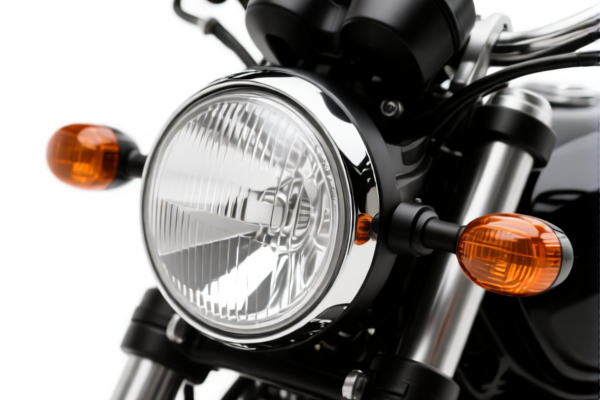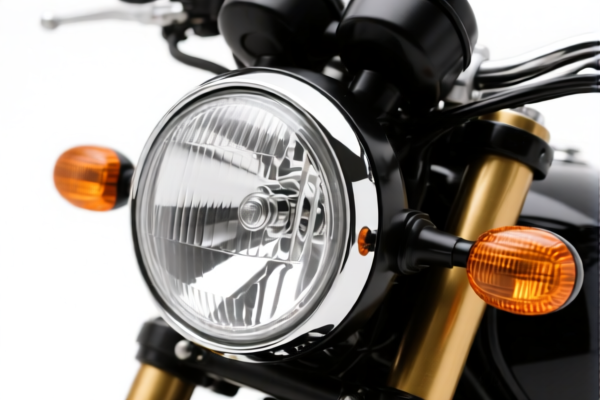| HS Code | Official Doc | Tariff Rate | Origin | Destination | Effective Date |
|---|---|---|---|---|---|
| 8512202040 | Doc | 55.0% | CN | US | 2025-05-12 |
| 8512202080 | Doc | 55.0% | CN | US | 2025-05-12 |
| 8539100010 | Doc | 57.0% | CN | US | 2025-05-12 |
| 8539520091 | Doc | 32.0% | CN | US | 2025-05-12 |
| 8513102000 | Doc | 42.5% | CN | US | 2025-05-12 |
| 8513104000 | Doc | 33.5% | CN | US | 2025-05-12 |
| 8531809051 | Doc | 37.5% | CN | US | 2025-05-12 |
| 8531809005 | Doc | 37.5% | CN | US | 2025-05-12 |
| 8475100000 | Doc | 55.0% | CN | US | 2025-05-12 |
| 8475901000 | Doc | 55.0% | CN | US | 2025-05-12 |
| 8310000000 | Doc | 55.0% | CN | US | 2025-05-12 |
| 8310000000 | Doc | 55.0% | CN | US | 2025-05-12 |
| 9405416000 | Doc | 61.0% | CN | US | 2025-05-12 |
| 9405418410 | Doc | 58.9% | CN | US | 2025-05-12 |




Motorcycle Lamp
A motorcycle lamp is a lighting device affixed to a motorcycle for illumination and signaling purposes. They are crucial for rider visibility, safety, and legal compliance.
Materials
Motorcycle lamps utilize a variety of materials in their construction:
- Housing: Typically constructed from durable plastics (polycarbonate, ABS) for impact resistance and lightweight properties. Metal housings (aluminum, steel) are also common, offering increased robustness and heat dissipation.
- Lens: Polycarbonate is the predominant material due to its impact resistance and clarity. Acrylic is sometimes used for cost-effectiveness.
- Bulb/Light Source: Traditionally halogen bulbs were standard. Modern lamps increasingly employ LEDs (Light Emitting Diodes) for their energy efficiency, longer lifespan, and brighter output. HID (High-Intensity Discharge) lamps offer very high brightness but generate significant heat.
- Reflector: Metal (aluminum, polished steel) coated with a reflective material to direct and focus the light beam.
- Wiring: Copper wiring with insulation for electrical conductivity and safety.
Purpose & Function
The primary functions of a motorcycle lamp are:
- Illumination: Providing a visible light source for the rider to see the road and surrounding environment in low-light conditions (night, tunnels, inclement weather).
- Visibility: Making the motorcycle visible to other road users (vehicles, pedestrians) to prevent accidents.
- Signaling: Incorporating turn signals, brake lights, and hazard lights to communicate the rider's intentions.
Usage Scenarios
Motorcycle lamps are essential in the following scenarios:
- Night Riding: The most obvious use case, providing crucial visibility in darkness.
- Low-Light Conditions: Dusk, dawn, tunnels, heavily wooded areas, or during inclement weather (rain, fog, snow).
- Legal Compliance: Most jurisdictions require functioning headlights, taillights, and turn signals for legal operation of a motorcycle on public roads.
- Enhanced Safety: Even during daylight hours, using a headlight can increase a motorcycle's visibility to other drivers.
Common Types
- Headlight: The primary forward-facing light source. Subtypes include:
- Halogen Headlights: Traditional, relatively inexpensive, but less efficient.
- LED Headlights: More efficient, brighter, longer lifespan.
- HID Headlights: Very bright, require ballasts, generate significant heat.
- Projector Headlights: Utilize a lens to focus the light beam for a more concentrated and defined pattern.
- Taillight: Located at the rear of the motorcycle, providing a red light visible from behind. Often combines with brake lights and turn signals.
- Turn Signals (Indicators): Flashing lights used to indicate the rider's intention to turn or change lanes. Typically amber or red.
- Auxiliary Lights (Driving Lights/Fog Lights): Additional lights mounted to the motorcycle for increased visibility in specific conditions.
- Hazard Lights (Emergency Flashers): Simultaneously activate turn signals to warn other road users of a hazard.
- Daytime Running Lights (DRL): Lights designed to be on continuously during daylight hours to enhance visibility.
Motorcycle lamps generally fall under electrical lighting or signaling equipment used for motor vehicles. Here's a breakdown of relevant HS codes based on the provided information:
-
8512202040: This code covers electrical lighting or signaling equipment (excluding articles of heading 8539), windshield wipers, defrosters and demisters, of a kind used for cycles or motor vehicles; parts thereof: Other lighting or visual signaling equipment: Lighting equipment For vehicles of subheading 8701.21, 8701.22, 8701.23, 8701.24 or 8701.29 or heading 8702, 8703, 8704, 8705 or 8711. This is a broad category for motorcycle lighting.
- Chapter 85: Electrical machinery and equipment.
- Heading 8512: Electrical lighting or signaling equipment.
- Subheading 8512.20: Other lighting or visual signaling equipment.
- 8512.20.20.40: Specifically for lighting equipment used for vehicles as defined in the subheading.
-
8539100010: This code applies to electrical filament or discharge lamps, including sealed beam lamp units and ultraviolet or infrared lamps; arc lamps; light-emitting diode (LED) light sources; parts thereof: Sealed beam lamp units Under
15.24 cm: For vehicles of subheading 8701.21, 8701.22, 8701.23, 8701.24 or 8701.29 or heading 8702, 8703, 8704, 8705 or 8711. This would apply if the lamp is a sealed beam unit and under 15.24 cm in size.- Chapter 85: Electrical machinery and equipment.
- Heading 8539: Electrical filament or discharge lamps.
- Subheading 8539.10: Sealed beam lamp units.
- 8539.10.00.10: Specifically for sealed beam units used for vehicles as defined in the subheading.
-
8539520091: This code covers electrical filament or discharge lamps, including sealed beam lamp units and ultraviolet or infrared lamps; arc lamps; light-emitting diode (LED) light sources; parts thereof: Light-emitting diode (LED) light sources: Light-emitting diode (LED) lamps Other. This applies if the lamp is an LED lamp.
- Chapter 85: Electrical machinery and equipment.
- Heading 8539: Electrical filament or discharge lamps.
- Subheading 8539.52: Light-emitting diode (LED) light sources.
- 8539.52.00.91: Specifically for LED lamps.
Tax Information:
- Codes 8512202040 and 8512202080 have a base tariff of 0.0%, an additional tariff of 25.0%, and an additional tariff of 30.0% after April 2, 2025, resulting in a total tariff of 55.0%.
- Code 8539100010 has a base tariff of 2.0%, an additional tariff of 25.0%, and an additional tariff of 30.0% after April 2, 2025, resulting in a total tariff of 57.0%.
- Code 8539520091 has a base tariff of 2.0%, an additional tariff of 0.0%, and an additional tariff of 30.0% after April 2, 2025, resulting in a total tariff of 32.0%.
Customer Reviews
No reviews yet.